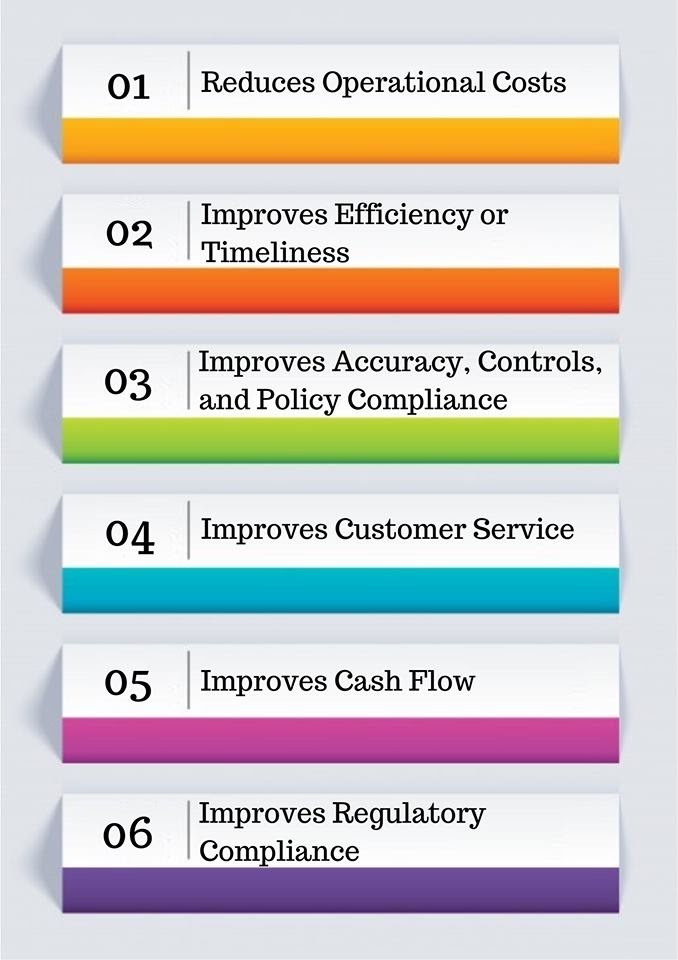
The Role of Six Sigma in Manufacturing
Last updated on 01st Oct 2020, Artciles, Blog
The basics of Six Sigma were actually designed to improve the performance in the manufacturing industry, originally developed as a kind of quality control, especially for large scale manufacturing companies. The main purpose of this quality control system was to improve the manufacturing processes along with eliminating the number of defects found in them. Later, the Six Sigma methodology was extended to other types of industries all over the world. Let’s dive into what Six Sigma is, and what we mean when we say Six Sigma manufacturing.
Description
This online course explains the concepts, strategies, tools, and techniques needed to complete process improvement projects and will also prepare you to take MindEdge’s Six Sigma Green Belt certification. The course is divided into eight modules that explain key foundational Six Sigma information, the five steps of the DMAIC methodology, and demonstrate how a Six Sigma approach can benefit your organization.
Course assignments detail the tools and skills you will implement to apply a Six Sigma approach to process improvement activities, and show you how to contribute as an important member of improvement teams. What you learn can be applied to any industry or business sector.
Subscribe For Free Demo
Error: Contact form not found.
Introduction to Six Sigma
The concept of Six Sigma was developed in 1986 by Motorola as a set of tools and techniques to improve their manufacturing processes. In 1995 this concept was used by Jack Welch as the main concept of the business strategy of General Electric—now used by a number of industrial sectors. Almost half of the Fortune 500 companies had adopted this process for their organizations by the end of the twentieth century.
Six Sigma identifies and removes defect-causing elements along with reducing the changeability of the business and manufacturing processes to improve the quality of outputs from a manufacturing process. In this methodology, an organization follows a defined set of steps to quantify the targeted value of the project. An application of Six Sigma in manufacturing can help an organization reduce pollution, reduce the time cycle of one or more processes, and reduce the cost of production for increasing profits and satisfaction level of its customers.
Motorola reported some astonishing facts about the benefits Six Sigma had for its organization after registering its service mark: they disclosed they had saved more than $17 billion by the end of 2006 with the help of quality improvement processes offered by this unique system.
How Six Sigma works
In the 1980s when the methodology of Six Sigma was originated, Motorola recognized an association between a decrease in production costs along with an increase in product quality. Until then, the common thinking was that higher-quality increases the cost of production. It turned out that isn’t true.
According to the basics of the doctrine of Six Sigma, the success of a company vitally depends on continuous efforts for achieving stable manufacturing processes. The factors of these processes are also important to be measured statistically so that they can be improved by analyzing them.
Organizations that use Six Sigma set up their systems and processes to include measurable metrics in manufacturing, service, financial processes, etc. They use this approach to determine the projects that best fit their business goals. Once a project or goal is defined, the organization follows the disciplined Six Sigma process that’s defined by four phases:
- 1. Measure
In this step, the organization measures existing systems to learn what can be considered a baseline or benchmark, among other things. - 2. Analyze
This step focuses on analyzing the system to identify ways to eliminate defects. This can be done in a variety of ways, including statistical analysis to determine the root cause of an issue. - 3. Improve
During this step, project teams seek optimal solutions, then develop and test the plan of action for improving a process or goal. - 4. Control
The Control step can be ongoing—an organization may modify operating instructions, policies, or procedures to help prevent future defects.
Six Sigma Features and Goals
The main features of Six Sigma for improvement in the manufacturing industry include a clear focus on quantifying and measuring the financial returns of any project. All these features allow an organization to clearly define the responsibilities and role of every individual within the team for improving the manufacturing process of the organization.
The prime goal of Six Sigma production is to ensure the manufacturing process has minimum defects. The occurrence of 3.4 defects per million chances is the ultimate goal of this system. This may seem to be an unachievable task—but most manufacturing companies achieve this final goal by adopting this technique to produce quality products.
Six Sigma Certification
Availability of various levels of training and certification is another hallmark of Six Sigma Certificate holders are organized into different “belt” levels, similar to many martial arts systems—for example, the first Six Sigma certification is a Six Sigma Green Belt. Masters attain a Six Sigma Black Belt.
Professionals with any Six Sigma certification—even a Six Sigma Green Belt—are highly valued because they can prove they have the knowledge to identify, measure, analyze, improve, and control projects. And although Six Sigma originated as a manufacturing methodology, its spread across industries benefits certificate holders—they can apply their skills in organizations worldwide.
Role of Six Sigma in Manufacturing
Sigma (σ) is a Greek letter used by statisticians to show the variation in a process. In a Six Sigma (6σ) environment, the standard for variability is reduced to 3.4 problems per million opportunities. Donald W. Benbow and T.M.Kubiak’s handbook The Certified Six Sigma Black Belt defines Six Sigma. Six Sigma is defined here as, “a fact-based, data-driven philosophy of improvement that values defect prevention over defect detection.”
The term “Six Sigma” is a measure of quality. However; Six Sigma is a business initiative, not a quality initiative. It is a way of doing business that improves quality and productivity. It also increases competitiveness & reduces cost.
Six Benefits of Six Sigma Methodology
Regardless of an organization’s industry or size, Six Sigma methodology provides a standard approach to problem-solving in terms of Six Sigma projects. To avail benefits or fruits of Six Sigma methodology, a Six Sigma Yellow or Green or Black or Master Black Belt project has to be undertaken. The project has to be in the respective vertical or business unit. Six key benefits of this methodology can be categorized in the following manner:-

Let us have a look at each category of benefits:-
1. Reduce Operational Costs
For most of the companies operating globally, operational cost & risks are significant factors. These factors contribute to low profits or even losses. Some risks cannot be eliminated, and operational cost is always omnipresent. Six Sigma methodology can provide a road map that can drastically reduce an organization’s exposure to risks. Also making organizations more efficient & effective at delivering its product or service.
An example of a project on cost-reduction would be associated with decreasing process cycle time, turnaround time, or LEAD time. LEAD time means the waiting time or the delay between initiation and execution of a task. The end result will be a standardized process with fewer touchpoints, hand-offs, non-value-adding activities, rework, and failures. All of which will reduce the cost for the company in terms of hard or soft savings.
Hard savings are actual reductions in dollars now being spent. Reduced budgets, fewer employees, reduction of prices paid on purchasing contracts are a few examples of hard savings. Soft savings are projected reductions that should result from the project. For example, savings from less inventory, lower cycle times, and reduced scrap. Additional benefits may gather by consistently meeting service-level agreements (SLAs) with customers, avoiding penalties, recognizing revenue faster, and so on.

Another main focal area for Six Sigma projects is to reduce costs. Costs associated with inefficient & ineffective quality products, services, or processes. Many companies choose to ignore the importance of quality in their regular operations and product offering. It is important to outline the impact that this ignorance will have on the bottom line of such companies.
On average, U.S. companies dedicate about 15 percent of their sales to resolving quality matters, issues, and bottlenecks. For quick reference here, let us talk about some of the more blatant tangible costs. Costs that are associated with providing products or services with inefficient & ineffective quality. Six Sigma projects can be undertaken to eliminate or mitigate these costs.
They are as follows:-
a. Inspection Costs:

Whenever a quality checker, inspector, or assessor inspects a service or product, he or she is performing a step that customers do not want to pay for. A Six Sigma project can be undertaken to reduce excessive inspection time or costs. In case of such projects, the flow or process would be set up such that any potential errors will be captured & fixed at the process step where they occur. Six Sigma is a Quality Assurance methodology. The six sigma project should be aimed towards preventing the inspection function by delivering the right output at once.
b. Rework Costs:
The term ‘Rework’ implies re-doing something that has apparently already been done. Without any doubt, we can say that no customer wants to bear this cost because the target of the right first time has not been met by the process. The idea of rework implies that the process has been set up in a way that allows incomplete or incorrect work to pass further along in the process so that it gets caught & corrected by someone downstream.

Six Sigma projects can be undertaken to create an error-proof mechanism or improve the detectability of the process. This is for reducing or mitigating the rework in all the operational processes. In other words, defect prevention should be the target of a Six Sigma project.
c. Customer Complaints:

If the Six Sigma project aims at minimizing the reasons for a customer complaint, then business units will be able to reduce the cost of customer complaints to the organization. Customer complaints can affect the bottom line drastically in cases; where the product or service has some critical faults. Moreover; complaints can lead to the loss of repeat business from an existing client. Six Sigma project is also aimed towards improving customer satisfaction score for a process, product, or service.
2. Improve Efficiency or Timeliness
Six Sigma projects help improve the efficiency of the overall process. Moreover; improving the timelines in delivering the process output or improving the on-time delivery of products or services every time can be the focus areas for Six Sigma projects.

To improve timeliness, Six Sigma projects can be targeted towards reducing the number of machine setups or set-up hours in a manufacturing process, improving the productivity of production or assembly lines, fully or partially automating the process wherever manual intervention in the process or function is higher than required and so on.
According to the industry the company is operating in, the terminology of process pain areas may change. Before undertaking any Six Sigma project, it is important to quantify or define all aspects of efficiency or timeliness. The defect in a process or product should be studied with the help of data, facts, figures, and information.
3. Improve Accuracy, Controls, and Policy Compliance
Six Sigma projects help improve accuracy by reducing Defects-Per-Million-Opportunities (DPMO) across the value stream in the process. The word ‘opportunity’ means the chance to commit an error. DPMO is a probabilistic measure of error rate or capability of a business or manufacturing process. This measure takes into account both actual defects & the number of probable defects in every opportunity.
As DPMO increases, the sigma-level of the process goes down and vice versa. Six Sigma projects help measure baseline and target process accuracy in terms of the DPMO & Sigma Level. It is a systematic way to measure process accuracy as it aims to prevent the occurrence of defects.

According to the Six Sigma methodology, the process which is in a state of statistical control is the stable process. With the help of graphical & Statistical Process Control (SPC) tools i.e., Control Charts and Run Charts, Six Sigma project helps track and monitor the stability of the process on an ongoing basis. There are different types of control charts; according to the type of data under consideration.
The word ‘Compliance’ refers to conforming or adhering to the rule or protocol. Compliance can be internal as well as external. Six Sigma tools & techniques help assess deviation from the plan, forecast, budget, or expectations. These techniques also help determine if customers or parties comply with the Service Level Agreements (SLAs).
4. Improve Customer Service
The image of the company is created in large part by its interaction with customers. Any company would want this interaction to be as stable as possible. The reason being disappointed customers are vocal critics. Six Sigma projects can help identify the number of variations customers are experiencing, what is driving that variation, and ultimately, how the number of dissatisfied customers can be minimized. Such Six Sigma projects can also be aimed at improving customer & vendor satisfaction.

Six Sigma projects can be undertaken for fully knowing customers and not just their issues or concerns. The methodology can also help businesses anticipate customer needs and address them through a streamlined process. Six Sigma projects help assess the need to automate customer service functions too. Six Sigma projects can be undertaken to address critical customer service issues. This depends on the industry that the company is operating in.
5. Improve Cash Flow

Six Sigma projects can also be targeted towards improving DSO i.e. Days Sales Outstanding in the business. If DSO improves, then cash flow improves as well. The higher the DSO, the lesser the ability of the company to convert credit sales into cash. Six Sigma projects can be aimed at reducing variation in Invoicing Process, Accounts Payable Process, Accounts Receivable process, Inventory Management Process, etc.
Multiple critical defects, which are measurable, will have to be identified across all the aforesaid processes to improve cash flow. It is a must to narrow down the scope of improvement too.
6. Improve Regulatory Compliance
Normally, there are three aspects of regulatory compliance. The first one is Finance & Audit, the second one is Information Technology, and the third one is Legal. Six Sigma projects can be undertaken in each of these aspects, depending on the kind of defects identified.

Under the umbrella of Finance & Audit, projects can aim towards improving the fund allocation process, reducing the cycle time or turnaround time in the cost estimation process, etc.
In the area of information technology or information security, a project can aim towards reducing the risk of non-compliance, improving the service quality of IT help-desk service, etc.
In the case of legal, the Six Sigma project can aim towards improving documentary & auditory compliance, the compilation process of critical & non-critical documents, etc.
Conclusion
In large organizations where clear communication channels and extensive management infrastructure is available, Six Sigma shows effective results. Most of the companies which have adopted this quality control system for improving their products and services are among the most successful ventures of the world.
The comments of these companies reveal the fact that by embracing Six Sigma they have saved lots of money than earlier. But before adopting this system for your manufacturing company it is recommended that you should spend some time learning about Six Sigma. You can become a Lean Six Sigma Expert by enrolling in Simplilearn’s Lean Six Sigma Masters Program—start with the basics and ultimately earn your Black Belt!
Are you looking training with Right Jobs?
Contact Us- Six Sigma Green Belt Salary
- Lean Six Sigma Tutorial
- Quality Improvement in Six Sigma
- Six Sigma Interview Questions and Answers
- Which Certification is Right for You: Six Sigma or Lean Six Sigma?
Related Articles
Popular Courses
- Agile Training
11025 Learners - Jira Online Training
12022 Learners - Pmp Certification Training
11141 Learners
- What is Dimension Reduction? | Know the techniques
- Difference between Data Lake vs Data Warehouse: A Complete Guide For Beginners with Best Practices
- What is Dimension Reduction? | Know the techniques
- What does the Yield keyword do and How to use Yield in python ? [ OverView ]
- Agile Sprint Planning | Everything You Need to Know


